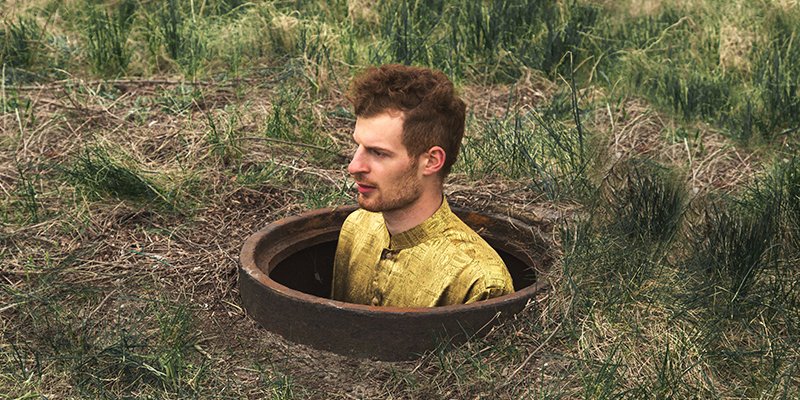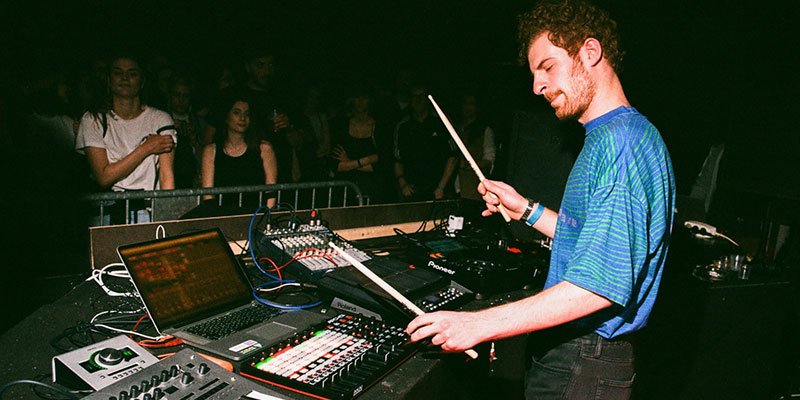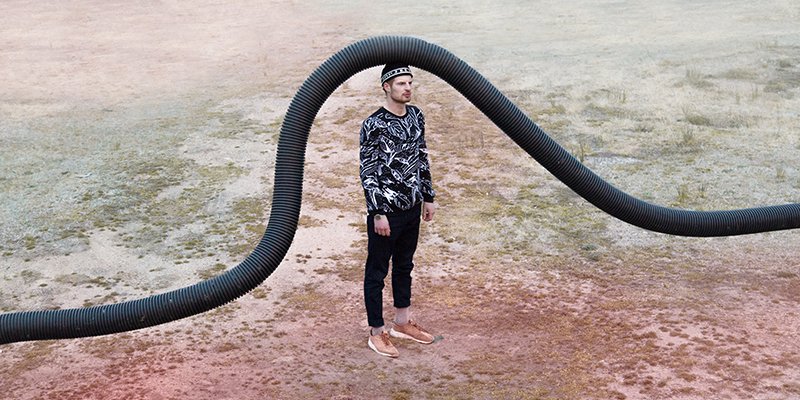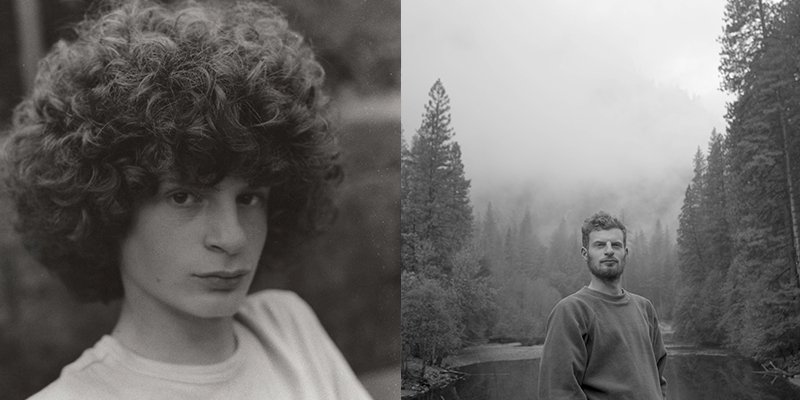Photay: Coming Up

Music is never produced in a vacuum, yet the most affecting pieces seem to exist as more than the sum of their parts. While it’s natural for any musician or producer to (consciously or not) deconstruct a piece of music into its components, there’s an element of the sublime that makes a truly sticky track.
With this in mind, Photay aka Evan Shornstein offers a fascinating look at the interplay between layers and approaches. While his academic background is in music theory and his productions boast rich harmonic and timbral evolutions, some of the most gripping Photay tracks dispense with complexity, or even traditional structure altogether, to focus on simpler elements such as field recordings from nature, off-kilter vocalizations, and other subtleties.
Photay – “Balsam Massacre”
It’s often the most gradual changes that sneak up on a Photay track before exploding into a moment of maximalist beauty. In “Balsam Massacre” above, note how shy keyboards slowly morph into and make way for a joyous acoustic brass section. While his influences are increasingly from ambient music, Photay’s productions are always clearly going somewhere – and every new sound seems descended from another.
On the eve of a European tour behind his latest album, Onism, Evan sat down with David Abravanel to discuss defining a live solo set, making a creative schedule, filling in digital silence, and more.
You play layered instruments on your album – how do you decide what to play live?
I think it's a very tortuous process always from what I've dealt with so far because I'm really passionate about having a live set that is not just the album, you know? Something that's just completely reworked but familiar. And it's been sort of a learning process from the first iteration of the set. I kind of look back and I think, “jeez, you were highlighting these elements and you were soloing, you know...” and over time I start to see the priority of what works live and what is overlooked.
To me it's kind of a blend of my current live set that is super nit-picky about elements that no one in the club or the venue [understands], and then also having a balance of like, ok well, this is something that needs to just be looped or just triggered – “I can't possibly play this, and if I do, it's gonna make me crazy.” So, it's sort of having this combination of... I think like playing the most important and noticeable elements and then having live samples that are being looped in the background.
What’s an example of an element that you’ll be playing live, and one that you’ll be looping in the background?
In introducing the Korg Minilogue, I’ve played a lot of chord progressions out. It feels really good, to just sort of jump on the keys for a second. If I was playing with a live band of course I'd love to have everyone play each individual element. But basslines, certain drums, I think a lot of the time with drums I'll have kind of light percussion layers that are looped and then I'll be physically playing the kicks or the snares but I try to change it for each song, so it's not just like here are backing tracks that I'm playing synth over, because that would drive me crazy. It's sort of like each song I focus on a different element.
Download the free Live Set of Everyday Push*
Please note: This Live Set contains some Live 10 Suite-only devices. Saving and exporting may be disabled in other versions of Live.
Playing kicks and snares live sounds unusual – are you playing it for a bit and then looping, or playing throughout the song?
For instance, my song “The Everyday Push”, I'm playing the big 808 kicks, the sort of spring delay percussion and the claps. I'll be doing that pretty much throughout the song and I'll just sort of reorganize the song or kind of rework it so there's kind of big breaks in the middle where I can hop off the drums and jump onto synth or something. So usually I'm playing it throughout but I leave enough kind of looping supporting percussion so I can hop off of it. If I were playing with other players I could really sit there and play it, but I want to have the flexibility to jump around. I usually have one hand on the [APC-40] and one on the [drum pad].

Photay in the midst of a live show – drum pads, controller and synth at the ready.
Speaking of spring sounds, there are some beautiful ones on Onism – lots of short, tonal tails of delay. Is there a specific way that you made those – a particular device to which you turn?
On the last record, I was given a spring tank from a guitar amp from a friend and it ended up with him just like plucking the actual springs. I had these samples that became kind of like my crashes instead of cymbals and just sort of running a lot of different sounds through it, or kind of plucking the springs.
I was also heavy on the Max for Live Convolution Reverb, so a lot of those have just been my favorite reverbs, my go-to for [things]. So this album actually, it was still a lot of simpler delays out of Live.
Evan walks us through his live setup and how he prepares his studio tracks for live performance.
Field recordings have come up with you a few times in prior interviews, and you can certainly here them on Onism. When you work with field recordings, are you usually adding them to existing tracks, or do the tracks result from what you’d like to do with the field recording?
Erm, both! I always feel really good about, just like having a naturally occurring sound, something super organic. Not even like something that you recorded in the studio, just something out in the world, kind of existing in its pure environment. And that definitely informs the track, even if it's just a second-long click, you know. I just like the idea of taking something from a very organic source and then pushing it way into digital territory.
A lot of the time too, it's like working on a track and there's just a lot of digital silence that I can feel. A couple of the tunes, like “The Everyday Push”, there's a really light layer of field recordings of, for example, birds on the Big Sur on the west coast, just off the side of the road. And I just feel like they're really subtle, but my friend recently told me, “yeah after you said that I really noticed them,” in headphones especially there's a... there's just like a light layer of an organic landscape.
That’s an interesting solution, rather than using sampled tape hiss or vinyl crackle.
Right! Early on, [I was] kind of throwing a vinyl crackle over everything. And then it's kind of like, well, once this music actually gets pressed to wax... it's kind of meta [laughs]. And for me it's just a nice way of sneaking in some kind of moment in there that people might not realize unless you bring it up.
Photay – “Storm”
When you start working on a track, is it usually with a chord progression, or a particular sound, or perhaps the quality of a loop?
Most consistently it’s a certain sound with a certain quality. Like there's the tune “Storm” on Onism which was a jam I had with my voice, a harmony pedal, and a cathedral reverb pedal. And I just spliced up the jam that I had and made a progression out of it. In other instances I've just come across a chord progression that I love and I'm just inspired by that solely. But it usually comes from a very specific timbre, that's just like, “I've just found this world that I like within that and I feel I can build off of it.”
Working in the studio, do you normally start things off in Session or Arrangement view?
Since the beginning, always Arrangement view. As I started to build live sets all in clip mode, I've had a lot of inspiration come from that because it's just been like using a sequencer, it's just going, you know, it loops and it just goes and it's just a way of just like not stopping and starting and clicking a lot. In the future it's a big goal of mine to kind of step out of Arrangement mode more. But for me it's always like... I guess a lot of my songs are arrangements because they really have a lot of structure and sections.

Your degree is in studio composition. Does that influence your approach to making a track?
Yeah. I had a few professors who were really pushing me into writing songs, so sitting down at the piano and just writing, [thinking], "if you can write a good melody or chord progression... it doesn't matter what the timbre is of the sounds". I agree with that, but I’ve also gotten pretty deep into techno and I've always been into IDM and all these different genres that are timbre-based. [So] there's something I've definitely taken from [my degree], kept an emphasis on melody, and development and whatnot.
I’ve always been sensitive to repetitiveness on a record. It might stem from the fact that my sister always used to hate how repetitive the music I was listening to was. Stuff like that. Certain people I know, maybe [repetition is] a little bit of a pleasing thing, but I'm trying to keep things moving. And in recent times I'm exploring the opposite of how... I've been really into the new Nils Frahm record, All Melody. There are these gargantuan chord progressions evolving. And a new kind of theme for me is, how long can I just kind of focus on this one theme, but with movement?
When you’re not touring and you’re trying to get into a creative mode, what’s the average day like for you? Do you find that you’re able to do things at a set time, or do you have to wait until inspiration strikes?
I've been experimenting a lot with that. I remember when I first moved to the city, I was thinking, “ok, it's time to treat this like a job, get up, have breakfast and sit down and... let's do it!” And I would just be sitting there, me and a wall, with this feeling of “oh man...”
Nowadays I've been doing a lot of stuff, like I go swimming first thing in the morning a lot and that really helps. But yeah, [creativity] definitely comes in waves. I go through long periods where I'm just working on timbres and sounds and then something happens where I just get stuck with this really clear vision of arranging and writing. But it's definitely not an everyday thing, I have a lot of friends who I'm very envious of who can just sit down, write a track, bust it out. I'll have these very fruitful periods of writing and then a long, dry one. And I've kind of... I've tried to have a balance, I'm like, ok, well during these periods I'm playing shows, I'm really working on my live set, it's just not a writing phase for me. Remixes have also helped because there's a timeline and a deadline, and there's source material, and they've been very helpful in periods where I'm not having as much success with my own writing.

Photay’s albums Photay (left) and Onism (right)
There’s a black and white photo of you both of your album covers – the first one looks like it’s from your teenage years.
Yeah, ninth grade.
And the next one looks like it’s more recent. It kind of feels like the first two Nas albums, showing him as a child and then an adult, implying maturity or progress. What’s the story behind those covers?
A lot of the aesthetics [in electronic music], you're trying to go with something futuristic, more electronic-looking or whatever. And then one of my friends one day suggested, “why don't you just use that amazing photo you have from ninth grade with the afro?” It felt really good because it was sort of like “OK, this is my first record on [Astro Nautico].” It still is goofy but at the time why not! And it started this nice progression: actually the next EP that came out, the Sadie EP, is just a black and white photo of my dog. I'm really into colors and I think it's a nice restriction actually to place on the artwork, because I think the music itself is pretty colorful and it's nice to give almost like a contradicting aesthetic.
For Onism, there was just this recent photo that my friend took of me on a road trip and yeah I don't know if I would've made that the cover if that afro hadn't preceded it, because I just liked that lineage, before and after.
Where do you see things progressing next with your music?
I've gotten a lot of new instruments, like the Buchla Easel, and I'm doing a lot of touring. A big goal is to just really keep moving forward and avoid repeating myself. I have a lot of goals set to really work in some new environments and keep experimenting with new workflows. Whenever the question is asked: “what is your typical workflow?” I still feel like I'm figuring it out.
Bonus Track:
Photay photos by Ben Zank
Listen to Photay on Bandcamp and SoundCloud.